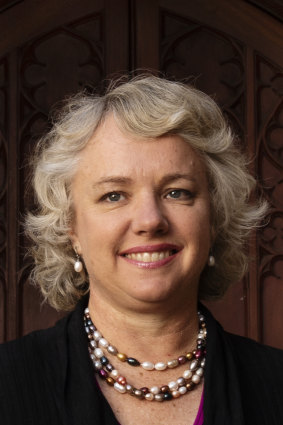Experts are concerned that misconceptions about the flu are hampering the uptake of vaccination among young children and other vulnerable groups as influenza cases begin to climb in Australia.
A “significant” flu season is being predicted for 2023. Last year’s influenza wave peaked earlier than usual – in June – and killed at least 308 Australians, aged between one and 106.
Young children are among those vulnerable to the flu.Credit:iStock
“The numbers are starting to creep up on the east coast – Queensland, NSW and Victoria,” said Professor Ian Barr, deputy director of the WHO Collaborating Centre for Reference and Research on Influenza.
“I think influenza will be back to its normal epidemic proportions. Whether that’s above or below the average season remains to be seen.”
The government’s seasonal flu vaccination program began rolling out across Australia again on the weekend. But despite the vaccination being free for children aged between six months and five years, only 32.4 per cent of children in this age group received their flu shot in 2022, compared to almost 70 per cent of those aged 65 and over.
The vaccination rate for young children was even lower for Aboriginal and Torres Strait Islander people (21.5 per cent) and for certain states, including Queensland (25.9 per cent) and WA (28 per cent).
Much of the recent focus on vaccination for COVID-19, which last year killed 13,166 Australians with a median age of 85.6 years, has been on older and immunocompromised people.
Leading vaccine uptake expert Professor Julie Leask said that parents may not realise that it was recommended that all children aged between six months and five years had a flu vaccination.
Professor Julie Leask.Credit:Louise Kennerley
Along with older people, pregnant women and Aboriginal and Torres Strait Islander people, young children are among those most at risk of severe illness from flu. All of these groups are eligible for free vaccinations.
“They [parents] put flu down in the hierarchy of seriousness for kids, thinking it’s an older person’s disease, but in fact, the curve for hospitalisations is U-shaped. So, there’s a high burden in kids and older people,” Leask said.
The University of Sydney expert was also concerned that children with medical conditions that put them at greater risk from the flu could be falling through the cracks, as they are seen by medical specialists rather than GPs, who are typically in charge of administering flu jabs.
There were more than 6600 cases of the flu detected in Australia in March, the highest number for March since 2019.
Leading infectious disease physician Professor Allen Cheng said people should aim to book in for their flu vaccination as soon as they could, as recent experiences from Australia and overseas showed it was very difficult to predict when cases might surge.
“The usual patterns of things have just been all stuffed up by the pandemic,” Cheng said.
“Last year [in Australia] wasn’t a particularly big season, but it was quite early, unusually early. And it’s been really strange in the northern hemisphere. North America had a really early season, then it stopped. Europe had this really long, drawn-out season.
“Particularly people who are at risk, the elderly and people with medical conditions, just go and get it when you can … because you just don’t know when it’s going to come this year.”
Australia’s expert vaccine advisory group has also recommended that COVID-19 and flu vaccinations can be given at the same time, in a move that is hoped will help improve lagging COVID-19 booster rates.
Adults aged 65 and over are recommended to have a COVID-19 booster every six months, along with all adults who have medical comorbidities that increase their risk of severe COVID-19.
There are more than 3.6 million Australians aged 65 or older group who are now due for a COVID vaccine booster.
The Morning Edition newsletter is our guide to the day’s most important and interesting stories, analysis and insights. Sign up here.
Most Viewed in National
From our partners
Source: Read Full Article




